The 1st Independent Polish Parachute Brigade
(1 Samodzielna Brygada Spadochronowa)
Learning To Exit Aircraft
Using The Stables At Largo House
 © RCAHMS
© RCAHMS
This is perhaps the least documented fact about the training at Largo House. No other website I have come across has any detail on this at all, so it is my privilege to bring this forgotten fact back into public knowledge.
Before I share a VERY EXCITING PHOTOGRAPH (Not In The Public Domain) with you, I want to tell you how I discovered a part of training at Largo House that no other website discusses and how I came to find this photo and the significance of it. Let's begin!
The Stables
This is a photo of the stables at the back of Largo House, taken in 1971 by a surveyor. The training that happened inside those doors (specifically in the room to the left) was MOST interesting as you will see in a minute.
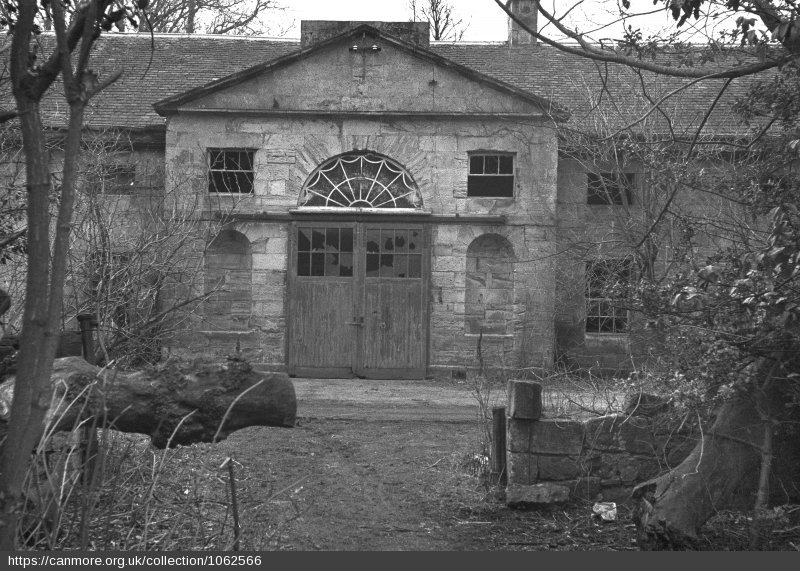 © RCAHMS
© RCAHMS
An Exciting Discovery
During research on my grandfather, I was directed to a book written in Polish called "Lata Zanikajacej Nadziei" by former parachuter Zbigniew S Siemaszko.
I managed to import a copy of the book from Poland, my initial interest in it was the chapter on his time at Auchtertool polish camp. However, he also mentioned a bit about Largo House.
On Page 124 of the book, Zbigniew refers to "At the back of Largo house...in the Stables...we cut a hole in the ceiling and practised jumping throguh the hole in the ceiling and landing on mattresses below." - Holy Moly! I could not believe what I was reading, something that no-one has ever spoken about regarding Malpi Gaj.
Now I had visited the Stables building quite recently and knew it was in an advanced state of dilapidation with no roof or internal structures of any kind... But I was dying to get any possible evidence or pictures of this piece of training equipment, such that it was.
Then in an old Polish book called "Go!" (A book about the parachute brigade), I came across a drawing that added fuel to the fire in my quest to locate a piece of training that barely got a mention and that very few seem to know about. The cartoon below depicts the training the recruit parachutists undertook in the stables at Largo House.
This cartoon drawing is that very same "hole in the ceiling" referred to earlier by Zbigniew!
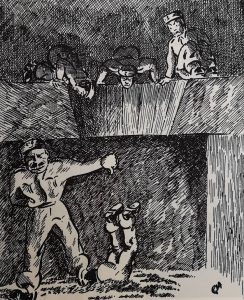 © www.swoopingeagle.com
© www.swoopingeagle.com
Fast forward a few weeks and there I am, browsing through the listings of a private archive in search of Largo House material. And then BAM! I saw a listing for several photo's taken by a surveyor in 1971 of Largo House. One of them simply said "internal photo of Stables at rear".
One short phone call later I have managed to secure an appointment at the archives to view the photo. The day of the appointment arrived, I was trying hard to contain my excitement at the new discovery I might be about to make.
I was shown to a table that had an archive box on it...this box was a treasure trove of Largo House material but the photo I was really looking for was just amazing.
I was blown away by how much detail was in the photo, okay, so its "just a badly cut hole in a ceiling", but my grandfather jumped through that hole as part of his training, as did several thousand other men.
Rare Photo That Captures The Whitley Bomber Training Hole
And here it is, THAT photo:
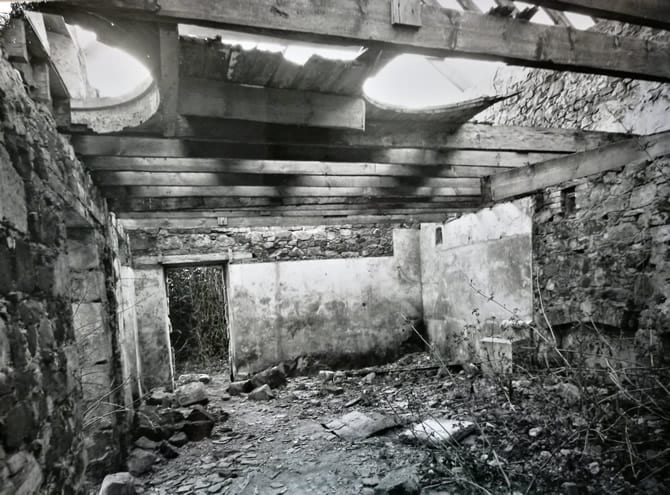 © RCAHMS
© RCAHMS
This is a very rare and exciting photo of the Whitley Bomber training hole (a phrase I coined!). Did they climb up the hole on the left and jump thorough the one on the right? Seems feasible!
However it goes a step beyond that! I'm about to reveal something that no website or book has discussed..
In The Aberdeen Press And Journal newspaper of 24 March 1942, a war correspondent visited Largo House and reported on the training that was happening there. He says "To train the recruits in the initial part of the jump, the Poles have constructed a complete fuselage in the loft of a farm building, with a hatch through which the men drop on to a bed of sand.
This is the inside of a Whitley bomber during construction, showing how tight space was;
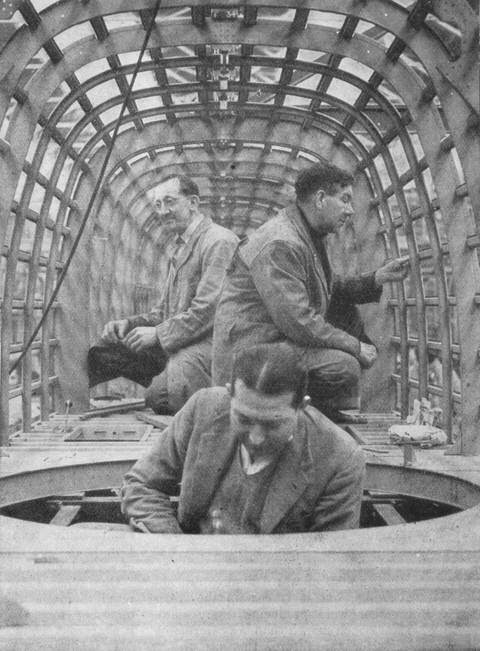
So not only was there a hole in the ceiling, but a mockup of the Whitley bomber in the loft.
And this is what they were practicing for;
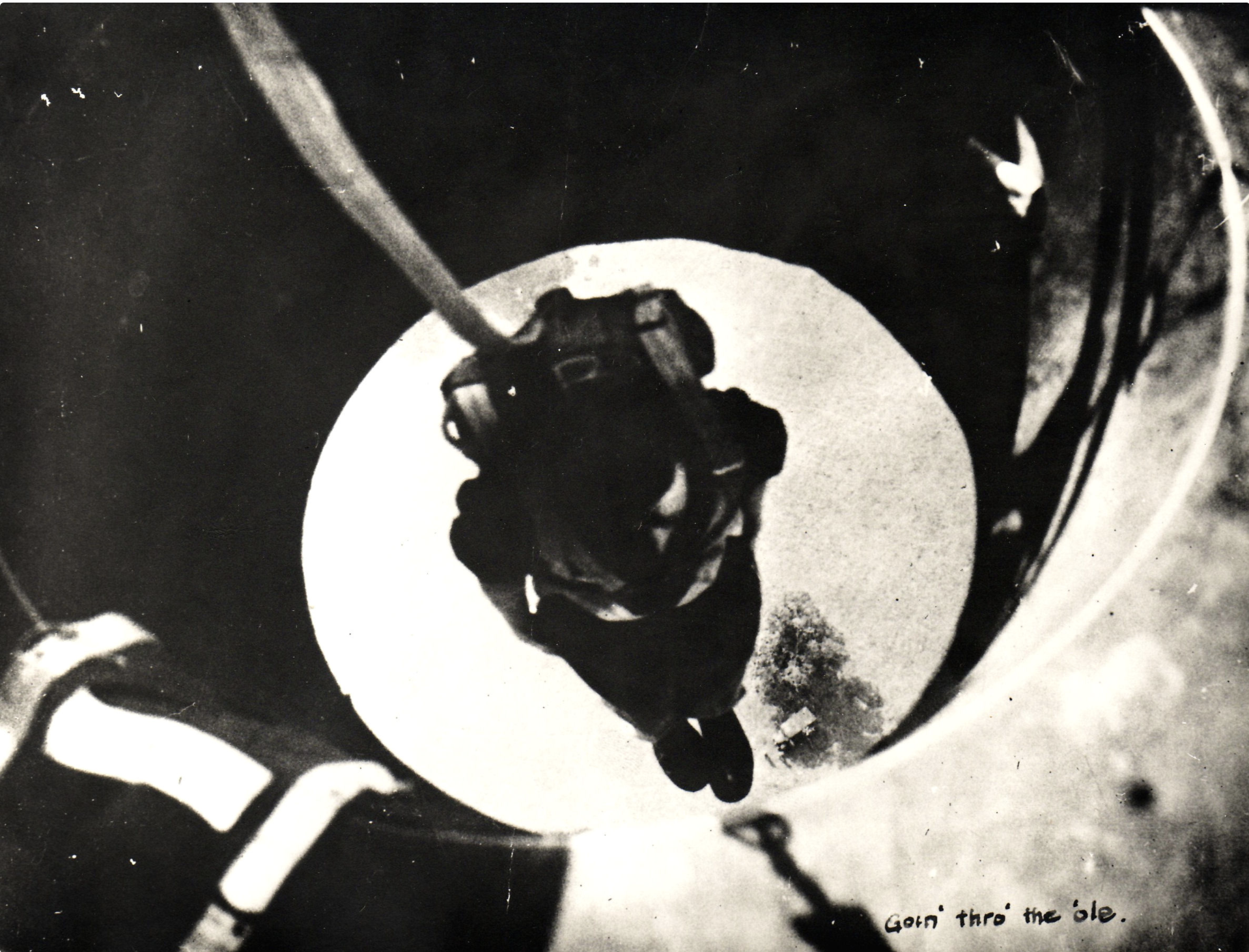 © www.swoopingeagle.com
© www.swoopingeagle.com
Stanislaw Jankowski gives a very interesting account of this hole: " In silent operations, we jumped through a hole in the floor. All art consisted of quickly slipping into this hole. We practiced it dozens of times at Monkey Grove from a good hole in the floor of an aircraft without wings, set in a hangar over a sawdust covered with a threshing floor."
Stanislaw implies there was an aircraft fuselage (without wings) at Largo House as well. There was a similar one at RAF Ringway (Visit my page on RAF Ringway to see it) Was there also one at Largo house? If all accounts are to be believed, there was 1) A mockup of a fuselage in the loft within the stables 2) A mockup of a fuselage (without wings) in the grounds of Largo house and 3) A real Whitley Bomber fuselage (including wings) within the grounds as per photo and newspaper accounts.
The Whitley Bomber
A Whitley bomber was the preferred plane for the parachutists to jump from. However, it did not lend itself to being parachuted from, it was confined, cramped, could not be stood up in, had no seats and windowless in the area where parachutists would sit.
To parachute out, a wooden hatch would be opened up, you would sit on the rim and drop out more often than not being pulled in the planes slipstream before descending.
The Polish Parachuters at Largo House made a mockup of the Whitley bomber hatch. They did this in the Stables building at the rear of Largo House as detailed above. This was as close to the real thing as they could invent with practically nothing more than a saw.
But much more interestingly they had a Whitley Bomber fuselage at Largo House (I managed to verify this via an article in a newspaper at the time where the reporter visited Malpy Gaj and commented on the fuselage being there)
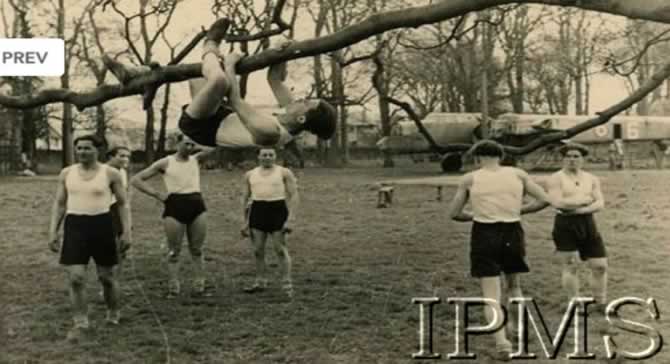 © Karta
© Karta
Expediated Training
On the same page the above author refers to doing initial jumps from the parachute tower (at Lundin links) at the end of week one. So we can see the training was super-intensive covering physical fitness, learning to exit the plane correctly, learning how to control the parachute mid-air and learning how to land.
On page 127 he refers to the training period being shortened to less than 2 weeks. earlier accounts state it was 4 weeks long so clearly changes to the period of training at Largo House were altered and it would appear the change to less than 2 weeks happened mid 1943.
According to Zbigniew, he jumped from the 26 meter high tower a total of 12 times during training.
Please Donate!

Uncover The Past - Support The Future
Please don't "grab & go"! Each year, 12,000 people visit this website to trace their Polish ancestry, uncover family stories, and connect with their roots. I believe that history should be accessible to all - but keeping this website alive since 2017 comes at a personal cost to me, 8 years @ £1000 per year (website mgt fees) has left an £8000 dent...with only £380 in total donated up to 27/11/25 😱😱😱.
Every detail you uncover and every story you piece together helps you piece family history together. Please donate if you found the existing information on this site useful, help me keep the site alive! Thanks! Jason Nellyer (Researcher & Site Owner)